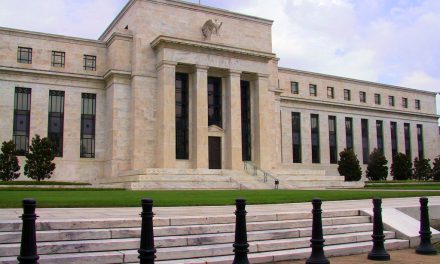Role of the transaction agent (TA)
The ability of a buyer or an owner to obtain financing is an integral component of most real estate transactions. Financing is critical whether the intended use of the mortgage is for:
- new property acquisitions;
- tenant improvements (TIs) under a lease;
- construction of buildings; or
- the refinance of an existing mortgage.
The submission of a mortgage application to a private lender or institutional lender is the catalyst which sets the machinery of the mortgage industry in motion.
Here, the buyer’s agent owes their buyer who needs purchase-assist financing the duty to ensure their buyer negotiates the best financial advantage available among mortgage lenders. As viewed and identified by lenders, the buyer’s agent in this context is called a transaction agent (TA).
The TA neither arranges nor makes a consumer mortgage. Thus, the buyer’s agent does not need a mortgage loan originator (MLO) endorsement on their license since they do not receive an additional fee for referring or assisting the buyer. Further, they are barred from receiving any compensation for referring the buyer to service providers or policing lender activity. Events related to the transaction serviced by the TA are covered solely by the broker fee negotiated on the sales transaction. [12 Code of Federal Regulations §1026.36(d)(iv)(C)]
The TA’s duties owed to their buyer
The duties imposed by agency law on the buyer’s TA include:
- helping the buyer locate the most advantageous mortgage terms available in the market;
- oversight of the mortgage application submission; and
- ensuring the timeliness of the lender’s mortgage packaging process and funding.
These TA activities ensure all documents needed from the buyer to comply with the lender’s requests and closing instructions are in order and complied with. If not, funding cannot take place and closing the sales escrow is jeopardized.
Adversarial lender position
The lender is not an agent or a partner of the buyer in the funding and closing of the sales transaction. Rather, the lender is the buyer’s adversary. A lender’s objectives and goals are diametrically opposed to those of the buyer – a debtor versus creditor relationship.
On the advice from their agents, buyers need to understand that the lender’s product – money – is always unpriced until the closing has taken place. This truth exists in spite of the good faith estimate of costs (GFE) and interest rate disclosures that are given to the buyer within three business days following the lender’s receipt of the consumer mortgage application. The buyer needs to understand the GFE is not a commitment to lend and is never a guarantee a mortgage on substantially the same terms will be funded, no matter how much the lender’s representative protests.
The principles for the non-consumer mortgage are the same: buyers are advised to know the lender may change the mortgage terms at any time before closing, though these changes are limited by the terms stated in the GFE. [12 Code of Federal Regulations §1024.7(c)-(e); see first tuesday Form 204, 204-1, 204-2 (BRE 882, 883 and 885) and 204-5]
Editor’s note — The Consumer Financial Protection Bureau (CFPB) has finalized new Loan Estimate and Closing Disclosure forms, which apply to all consumer mortgages beginning August 1, 2015. The new forms significantly simplify and streamline the mortgage lending process for homebuyers.
The Loan Estimate replaces both the initial Truth-in-Lending statement and the good faith estimate (GFE). The Loan Estimate is provided within three business days of the lender’s receipt of the application, and provides the mortgage terms and details quoted by the lender.
The Closing Disclosure replaces both the old final Truth-in-Lending statement and the HUD-1 Settlement Statement. This form is provided within three business days of mortgage closing. It summarizes the “final” mortgage terms and details. [12 Code of Federal Regulations §§1026.19 et seq.]
Before meeting with a lender
After the seller accepts their buyer’s offer, the buyer’s agent assists their buyer with submitting a Uniform Residential Loan Application to multiple lenders. [See first tuesday Form 202 (FNMA 1003)]
To best protect the buyer, applications are to be submitted to at least two lenders. Much like comparative shopping for any other costly item, shopping for a mortgage yields the best and most competitive mortgage terms available in the market. Without a backup application concurrently processed by another lender, the buyer is left with no opportunity to reject the lender’s changes. With no safety net, the buyer has passed the point of no return and has no backup arrangement with another lender to turn to.
The Uniform Residential Loan Application is designed to be completed by the buyer with the assistance of the TA and the lender’s mortgage representative or loan broker. All parties work together — the common objective being to close the mortgage. [See first tuesday Form 202 (FNMA 1003)]
As part of the TA’s advice and guidance in the mortgage application process, the TA instructs the buyer regarding:
- the expectations held and the role of each servicer or affiliate involved in the mortgage transaction, such as the lender’s mortgage representative, an appraiser, any mortgage broker, credit agencies, creditors of the buyer, etc.; and
- what is going to take place during the application process, such as lender disclosures, payment of lender costs, funding requirements, etc.
Documents the buyer needs to gather and submit to the lender to process the mortgage include:
- W-2s or other tax documents for the self-employed;
- recent bank statements; and
- recent pay-stubs to evidence the employment information represented by the buyer in section four of the mortgage application. [See first tuesday Form 202 (FNMA 1003)]
Lenders also verify other information in the application by requesting and reviewing:
- an appraisal report to establish the value of the property serving as security for the mortgage;
- verification of deposit or tax returns to establish the buyer’s income and assets; and
- a credit report to establish the buyer’s liabilities and likelihood of repaying the mortgage. [See first tuesday Form 202 (FNMA 1003)]
Separate applications to multiple lenders
Multiple applications keep lenders vying for the buyer’s business. This competition assures the lender remains competitive to the last minute – the moment of funding.
Thus, a buyer who submits applications to two lenders has a bargaining chip against a lender who later:
- charges higher fees than anticipated or otherwise available in the market (if the rate floats); or
- is unable or unwilling to originate the mortgage on the terms initially disclosed to the buyer, or at the lower prevailing par rate available in the mortgage market at the time of closing.
Submitting a mortgage application to a lender, much less multiple lenders, does not obligate the buyer to choose that lender. Lenders only disclose reasonable and competitive cost estimates, mortgage rates and terms when the initial mortgage application is submitted. However, the lender has no obligation under any rate or terms until their final commitment is issued three days before closing.
Within three business days after the lender’s receipt of the mortgage application, the lender is required to hand the buyer the lender’s GFE of costs.
On this form, the lender discloses all mortgage related charges to be paid by the buyer if they originated a mortgage at the time of the application, such as:
- origination fees;
- credit report fees;
- insurance costs; and
- prepaid interest. [See first tuesday Form 204, 204-1, 204-2 (BRE 882, 883 and 885) and 204-5]
If the estimates worked up by the lender prior to submission of the mortgage application are widely divergent from those furnished in the GFE and accompanying Truth-in-Lending Act (TILA) annual percentage rate (APR) disclosures, the lender’s true colors are instantly exposed. Little variation exists within the very few days involved, unless the lenders initial representations were deceitful. [See first tuesday Form 204, 204-1, 204-2 (BRE 882, 883 and 885), 204-5 and 221]
Prior to closing, the lender hands the buyer a second “refreshed” GFE and TILA (APR) disclosure. Upon reviewing the GFE and TILA disclosure, if the TA discovers the borrower is overcharged above an acceptable level of variation, the TA encourages the borrower to have the lender adjust their fees to bring them in line. [See first tuesday Form 204, 204-1, 204-2 (BRE 882, 883 and 885), 204-5 and 221]
The Loan Estimate form rules require the lender to refund the difference. [12 CFR §1026.19(f)(2)(v)]
Government supports multiple applications
Multiple state and federal government agencies promote the practice of submitting mortgage applications to multiple lenders. To assist the buyer with the task of comparing the products of two or more lenders, entities such as the California Department of Corporations, Freddie Mac, the Federal Reserve, and the Federal Trade Commission publish Mortgage Shopping Worksheets. Further, the CFPB offers guidance of what to expect when shopping for a mortgage.
These Mortgage Shopping Worksheets, designed to be completed by the buyer with the assistance of the TA, contain a list of all the mortgage variables commonly occurring on origination and during the life of the mortgage.
After submitting mortgage applications to two lenders and receiving the corresponding GFE and TILA APR disclosures (or Loan Estimate beginning August 1, 2015), the buyer will possess all the information needed to fill out a Mortgage Shopping Worksheet for each lender. Once complete, the buyer and TA can clearly compare the terms offered by the competing lenders, and if the lender selected remains competitive, close with that lender.
The California Department of Business Oversight Mortgage Shopping Worksheet can be obtained through their website at www.dbo.ca.gov.
Government financing programs at a glance
A variety of state and federal mortgage programs exist, offering down payment assistance for low- to moderate-income buyers and first-time buyers, mortgage refinance or modification programs to distressed owners, and special programs for veterans.
Federal programs:
Federal Housing Administration (FHA)-insured mortgage: The FHA insures lenders against loss for the full amount of a mortgage. FHA-insured mortgages permit small cash down payments and higher loan-to-value ratio (LTV) requirements than mortgages originated by conventional lenders.
U.S. Department of Veterans Affairs (VA) mortgage guarantee: The VA mortgage guarantee program assists qualified veterans or their surviving spouses to buy a home with zero down payment.
Federal National Mortgage Association (Fannie Mae), Federal Home Loan Mortgage Corporation (Freddie Mac)and Government National Mortgage Association (Ginnie Mae): Fannie Mae, Freddie Mac and Ginnie Mae are government-sponsored enterprises (GSEs) designed to help facilitate home purchases for low- to moderate-income buyers. Fannie Mae and Freddie Mac do not provide home mortgages directly. Instead, they purchase and package pools of comparable mortgages within tranches of qualifying mortgages, known as conforming mortgages, as mortgage-backed bonds (MBBs). They then sell the MBBs through Wall Street Bankers on the secondary mortgage market.
Fannie Mae: www.fanniemae.com; 1-800-732-6643
Freddie Mac: www.freddiemac.com; 1-800-373-3343
Ginnie Mae: www.ginniemae.gov; 1-800-234-4662
Home Affordable Modification Program (HAMP):HAMP is a federal program designed to induce lenders to modify the mortgages of distressed homeowners by paying the lender a fee for each modification. Modifications take the form of a lowered interest rate or extended amortization period, with the goal of reducing the homeowner’s monthly housing payments to no more than 31% of their gross income.
Home Affordable Refinance Program (HARP):HARPprovides federal funds to help homeowners refinance existing mortgages that are owned by Fannie Mae or Freddie Mac.
Home Affordable Foreclosure Alternatives (HAFA): HAFA provides incentives for distressed homeowners, lenders and agents to consider a short sale or deed-in-lieu of foreclosure rather than a foreclosure by providing up to $3,000 to the homeowner for moving expenses.
HAMP / HARP / HAFA: www.makinghomeaffordable.gov
State programs:
California Housing Finance Agency (CalHFA): CalHFAadministers several first-time homebuyer assistance programs, offering 30-year fixed rate mortgages with interest rates and fees typically lower than conventional financing.
www.calhfa.ca.gov; 1-877-922-5432
California Department of Veterans Affairs (CalVet):CalVetprovides a veteran with an ARM mortgage at a rate generally below market, low monthly payments and flexible credit standards, as compared to conventional financing or mortgages insured by the FHA or guaranteed by the VA. [See Chapter XX]
www.cdva.ca.gov; 1-800-952-5626
California Department of Housing and Community Development (HCD): HCD programs fund local public agencies and private entities which produce affordable housing for rental or ownership.
www.hcd.ca.gov/fa; 916-322-1560














